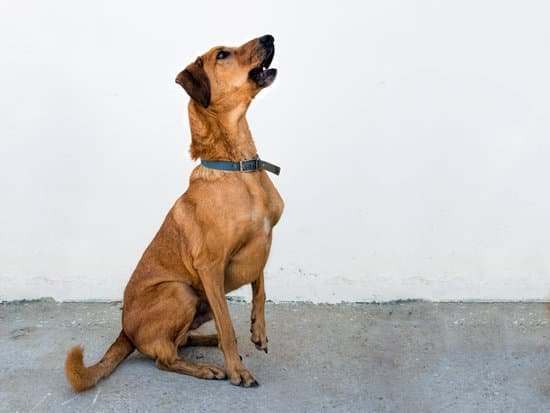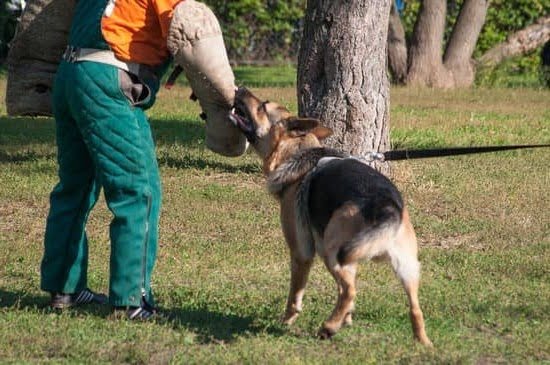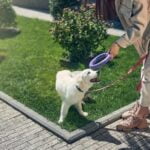Training a dog to roll over is an impressive and entertaining trick that can also serve as a foundation for more advanced commands. Understanding the behavior of your dog is crucial in successfully teaching them to perform this trick.
This article will guide you through the process of training your dog to roll over, from choosing the right treats and rewards for training to troubleshooting common challenges. By following the step-by-step training guide and utilizing positive reinforcement, you can build a strong bond with your furry companion while teaching them this fun trick.
Before starting the actual training process, it’s important to understand the basics of rolling over. This includes knowing how dogs naturally perform this behavior, as well as recognizing any physical or mental preparation needed before beginning the training. By preparing your dog for the training session and selecting appropriate treats and rewards, you can ensure that they are motivated and ready to learn.
In addition to discussing the step-by-step training guide for teaching your dog to roll over, this article also covers troubleshooting common challenges that may arise during the training process. Patience and consistency are key elements when it comes to successfully training your dog, and understanding the importance of positive reinforcement will help you reinforce and practice the roll over command effectively.
By following these guidelines, you can go beyond the basics and add variations to the roll over command in order to further engage with your dog and strengthen their skills.
Choosing the Right Treats and Rewards for Training
When it comes to training your dog to roll over, choosing the right treats and rewards is essential for successful training. The key to effective training is finding treats that your dog finds irresistible and will be motivated to work for. It is important to choose treats that are small, easy for your dog to consume quickly, and are not too high in calories to avoid overfeeding during training sessions.
When selecting treats for training your dog to roll over, it is important to consider the preferences of your individual dog. Some dogs may be motivated by small pieces of cooked chicken or cheese, while others may prefer commercial dog treats or even fresh fruits and vegetables. Experiment with different types of treats to see which ones your dog responds best to.
In addition to food rewards, you can also use praise, petting, or play as a reward for successfully completing the roll over command. Some dogs may respond well to a combination of food rewards and praise, so it’s important to find the right balance that motivates your dog.
Remember that consistency is key when choosing treats and rewards for training – use the same rewards every time you train your dog and avoid giving treats outside of training sessions to maintain motivation during training.
Preparing Your Dog for Training
Before you begin training your dog to roll over, it’s crucial to ensure that they are physically and mentally prepared for the task. Just like humans, dogs perform best when they are in good physical condition and have a clear mind. Here are some important steps to take before starting the training process.
First, ensure that your dog is well-exercised before training sessions. A tired dog is more likely to be focused and receptive to learning new commands. Taking your dog for a brisk walk or engaging in active playtime before training can help release excess energy and prepare them for learning.
Additionally, mental stimulation is just as important as physical exercise when it comes to preparing your dog for training. Engage your dog in activities such as puzzle toys, obedience training, or interactive games to get their mental gears turning. This will help them be more focused during training sessions and better able to understand and retain the roll over command.
Furthermore, creating a positive and conducive environment for training is key. Choose a quiet place free from distractions where you can work with your dog without interruptions. Providing an environment where your dog feels safe and comfortable will set the stage for successful training sessions on how train a dog to roll over.
| Physical Preparation | Mental Preparation |
|---|---|
| Ensure your dog is well-exercised before training sessions. | Engage your dog in mental stimulating activities. |
| Take them for a walk or engage in active playtime. | Provide puzzle toys or engage in obedience training. |
| Create a positive and conducive environment for training. | Choose a quiet place free from distractions. |
Step-by-Step Training Guide for Teaching Your Dog to Roll Over
Training your dog to roll over can be a fun and rewarding experience for both you and your furry friend. The first step in teaching this trick is to make sure your dog understands basic commands like “sit” and “down.” Once your dog has these commands mastered, you can start working on the roll over command.
To begin training, start with your dog in the “down” position. Hold a treat in front of your dog’s nose and slowly move it towards their shoulder. As your dog follows the treat with their nose, they should naturally start to roll onto their side. When they do this, give them the treat and praise them enthusiastically. Repeat this process several times until your dog is consistently rolling onto their side when following the treat.
Once your dog is reliably rolling onto their side, you can add the verbal command “roll over” or any other phrase of your choice. Say the command as you lure them into the rolling motion with the treat, and be sure to reward them every time they successfully complete the action.
Remember to be patient and consistent with your training. Some dogs may pick up on this trick quickly, while others may take more time to learn. Regardless of how long it takes, always use positive reinforcement and never force your dog into any position. With time and practice, your furry companion will master the roll over command in no time.
| Step | Description |
|---|---|
| 1 | Start with basic commands like “sit” and “down” |
| 2 | Lure your dog into a rolling motion using a treat |
| 3 | Add a verbal command such as “roll over” as you lure them with the treat |
Troubleshooting
Identifying the Challenges
When teaching your dog to roll over, it’s important to be aware of the common challenges that may arise during the training process. Some dogs may struggle with certain aspects of the command, such as understanding the physical movement required or becoming easily distracted. It’s essential to recognize these challenges so that you can address them effectively and adjust your training approach as needed.
Addressing Lack of Motivation
One common challenge in teaching a dog to roll over is a lack of motivation. If your dog seems uninterested in learning the command or is not responding to treats and rewards, it may be necessary to reassess the type of treats you are using or find alternative methods of motivation. Experiment with different types of treats and rewards to determine what motivates your dog the most, whether it’s a favorite toy, verbal praise, or playtime.
Dealing With Physical Limitations
Another challenge that some dogs may face when learning to roll over is physical limitations. This can be particularly true for older dogs or those with mobility issues. In such cases, it’s important to be mindful of your dog’s comfort and physical capabilities when attempting to teach them this command. Make adjustments as needed, such as breaking down the movement into smaller steps or providing extra support if your dog has difficulty rolling over on their own.
Ultimately, troubleshooting common challenges in training requires patience, adaptability, and a deep understanding of your dog’s individual needs and behaviors. By identifying and addressing these obstacles, you can create a positive and effective training environment for teaching your dog how to roll over.
Reinforcing and Practicing the Command
Once your dog has successfully learned the “roll over” command, it’s important to reinforce and practice the command regularly to solidify their understanding. Consistent reinforcement will help your dog remember the behavior and become more fluent in executing the roll over on command.
To reinforce the roll over command, consider using a combination of verbal praise, treats, and physical affection. When your dog successfully rolls over on command, immediately offer verbal praise such as “good boy/girl” or “well done.” This positive reinforcement will help your dog associate the action with a positive outcome.
In addition to verbal praise, offering treats as a reward can also be highly effective when reinforcing the roll over command. Make sure to choose high-value treats that your dog absolutely loves, such as small pieces of cooked chicken or freeze-dried liver. By consistently rewarding your dog with treats after they successfully roll over, you are strengthening their motivation to perform the behavior on cue.
Lastly, don’t forget to show physical affection as a form of reinforcement. After your dog rolls over on command, give them gentle pets or cuddles to further reinforce their good behavior. This combination of verbal praise, treats, and physical affection will keep your dog motivated and engaged in practicing the roll over command regularly.
- Offering verbal praise such as “good boy” or “well done”
- Using high-value treats like small pieces of cooked chicken or freeze-dried liver
- Providing physical affection through gentle pets or cuddles
Beyond the Basics
Adding variations to the roll over command can further challenge and engage your dog, as well as strengthen their understanding of the command. By introducing variations, you can keep the training sessions interesting and prevent your dog from getting bored or complacent with the basic roll over command.
Adding a Verbal Cue
To add a verbal cue to the roll over command, start by saying the verbal cue just before luring your dog into the roll over position. Repeat this process consistently until your dog begins to associate the verbal cue with the behavior of rolling over. Eventually, you can eliminate the need for a physical lure and rely solely on the verbal cue to prompt your dog’s response.
Incorporating Hand Signals
Introducing hand signals alongside the verbal command can reinforce your dog’s understanding of what is expected of them during training. Pair a specific hand signal, such as a sweeping motion with your hand, with the verbal cue for rolling over. With consistent practice, your dog will learn to respond to both the visual and auditory cues simultaneously.
Adding Distractions
Training your dog to roll over in different environments or amidst distractions can help solidify their understanding of the command. Start practicing in quiet areas and gradually introduce mild distractions, such as toys or noise. As your dog becomes more reliable in obeying the roll over command, progressively increase the level of distraction to test their focus and obedience.
By incorporating these variations to the roll over command into your training sessions, you can enhance your dog’s responsiveness and adaptability while deepening their bond with you as their trainer. Remember that patience and consistency are key when teaching new variations and reinforcing existing commands – always be ready to celebrate progress and address setbacks as they happen throughout training sessions.
Understanding the Importance of Patience and Consistency in Training
Training your dog to roll over can be a fun and rewarding experience, but it requires a lot of patience and consistency. Dogs, like humans, learn at their own pace, and it’s essential to be patient throughout the training process. Rushing or becoming frustrated can cause your dog to become stressed or disinterested in learning the trick.
Consistency is also key when teaching your dog new commands, including how to roll over. It’s important to set aside dedicated time each day for training sessions and to use the same cues, rewards, and techniques consistently. Dogs thrive on routine and structure, so sticking to a consistent training schedule will help them understand what is expected of them.
To effectively train your dog to roll over, it’s crucial to remain calm and positive during training sessions. Dogs are highly intuitive animals and can pick up on their owner’s emotions. By staying patient, calm, and positive throughout the process, you’ll create a supportive environment that encourages your dog to learn and succeed.
When implementing the roll-over command into your dog’s training regimen, keep in mind that every pup learns at their own pace. Some dogs may pick up the trick quickly while others may take more time. It’s essential not to compare your dog’s progress with others but instead focus on celebrating their individual achievements. Remember that each step forward is a success and reward your dog for their efforts along the way.
Utilizing Positive Reinforcement and Building a Strong Bond With Your Dog
In conclusion, training your dog to roll over can be a fun and rewarding experience for both you and your furry friend. By understanding the basics of rolling over and choosing the right treats and rewards for training, you can set the stage for success. It’s important to prepare your dog both physically and mentally for training, as well as to follow a step-by-step training guide to effectively teach the roll over command.
As with any type of training, there may be common challenges that arise when teaching your dog to roll over. It’s essential to troubleshoot these challenges with patience and consistency, utilizing positive reinforcement to encourage your dog along the way. Building a strong bond with your dog through training can create a deeper connection and understanding between you both.
Beyond the basics of rolling over, you can add variations to the command to continue challenging and stimulating your dog. Remember that patience and consistency are key in training, and reinforcing and practicing the command regularly will help solidify your dog’s understanding of the behavior. By following these steps, utilizing positive reinforcement, and building a strong bond with your dog, you can successfully train them to roll over while creating a positive learning experience for both of you.
Frequently Asked Questions
How Do I Teach My Dog to Roll Over?
Teaching a dog to roll over can be achieved through positive reinforcement and patience. Start by getting your dog to lie down, then use a treat to guide them into a rolling motion while saying the command “roll over.”
What Would Be Best Advice to You to Quickly Teach a Dog to Roll Over on Command?
The best advice for quickly teaching a dog to roll over on command is to use high-value treats that your dog loves and to practice in short, frequent sessions. Consistency and positive reinforcement are key to successful training.
Why Does My Dog Refuse to Roll Over?
There are several reasons why a dog may refuse to roll over. It could be due to fear or discomfort in the position, lack of understanding of the command, or simply not being motivated enough by the treats or rewards being offered. It’s important to assess the situation and adjust the training approach accordingly.

Welcome to the blog! I am a professional dog trainer and have been working with dogs for many years. In this blog, I will be discussing various topics related to dog training, including tips, tricks, and advice. I hope you find this information helpful and informative. Thanks for reading!





